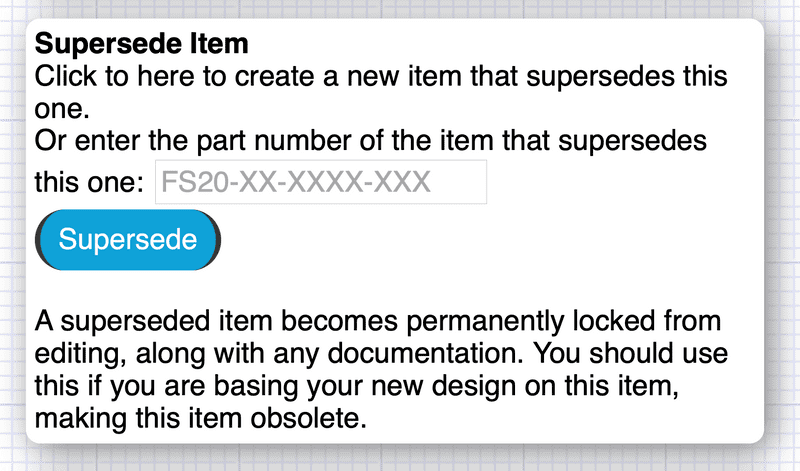De-authorising and Superseding
The two main actions for an item once it becomes obsolete
Contents
No design lasts forever! Once a design has been authorised it's typically manufactured, bought or assembled then used. After the design's life, whether that be a production run of 1000s or the testing of a prototype, a new design replaces this one or the design is retired all together.
Superseding and de-authorisation both drive at how to replace the design with a new one. The difference between the two methods is if a "fresh" design is replacing and old one, or an old design is being iterated.
How to De-Authorise

The above picture should explain the process quite simply! This dialogue can be found on the item details page of an authorised item and can be viewed by anyone.
How to Supersede

There are two ways to supersede an item, either by directly creating a new one, or supersede an item with one that already exists.
It should be noted that any type of design item can be used to supersede another.
Which Option to Take
There is a grey area between which option you should take, and different team leaders/organizations will have different styles. The below is our guidance on the issue.
Supersede an item when you want to change it's name, change the function or design significantly or when "soft" knowledge of the old design has been lost.
De-authorise a part (so that a new design can be uploaded and authorised) when the next design will be a natural iteration of the old one. For instance a part that is in production but is going to switch to a different material and slightly different geometry to match. Or on the other side, a prototype that was mostly correct apart from a few improvements that are required.